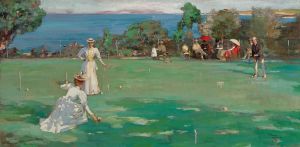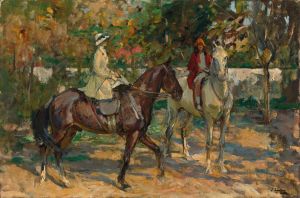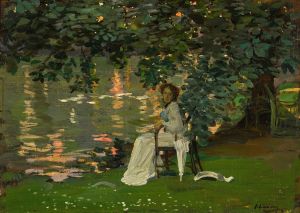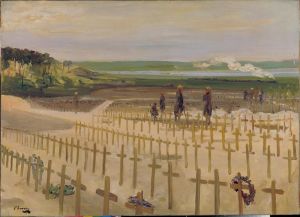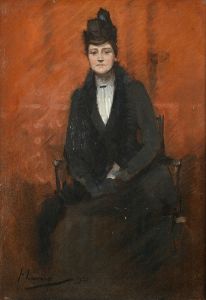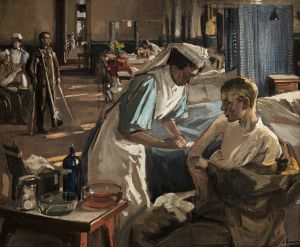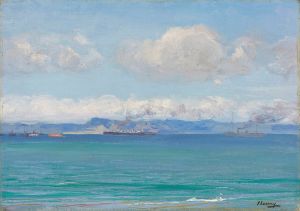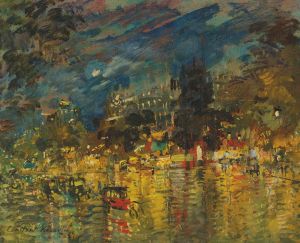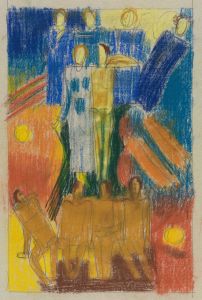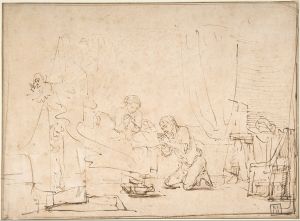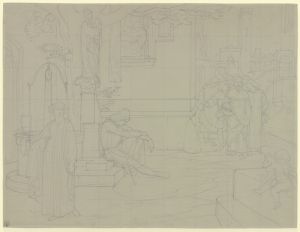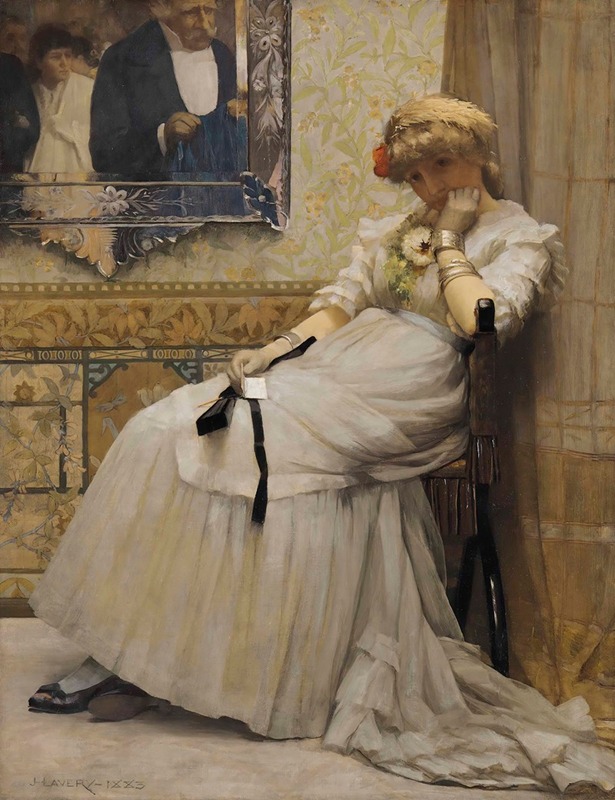
After the Dance
A hand-painted replica of Sir John Lavery’s masterpiece After the Dance, meticulously crafted by professional artists to capture the true essence of the original. Each piece is created with museum-quality canvas and rare mineral pigments, carefully painted by experienced artists with delicate brushstrokes and rich, layered colors to perfectly recreate the texture of the original artwork. Unlike machine-printed reproductions, this hand-painted version brings the painting to life, infused with the artist’s emotions and skill in every stroke. Whether for personal collection or home decoration, it instantly elevates the artistic atmosphere of any space.
"After the Dance" is a painting by the renowned Irish artist Sir John Lavery, completed in 1921. Lavery, born in Belfast in 1856, was a prominent figure in the British art scene and is best known for his portraits and genre scenes. His works often capture the elegance and social dynamics of the late 19th and early 20th centuries.
The painting "After the Dance" exemplifies Lavery's skill in portraying the subtleties of human interaction and the nuances of social gatherings. It depicts a scene following a dance, capturing the moment when the excitement of the event has subsided, and the participants are left in a state of reflection or fatigue. The composition is notable for its attention to detail and the way it conveys the atmosphere of the aftermath of a lively social occasion.
Lavery's use of light and shadow in "After the Dance" is particularly striking. The painting is characterized by its soft, muted tones, which create a sense of calm and introspection. The figures in the painting are rendered with Lavery's typical finesse, showcasing his ability to capture the human form with both precision and sensitivity. The expressions and postures of the figures suggest a range of emotions, from contentment to contemplation, inviting viewers to imagine the stories behind each character.
The setting of the painting is elegant and refined, reflecting the social milieu that Lavery often depicted in his works. The artist's attention to detail extends to the depiction of the interior, with its rich textures and carefully arranged elements, which add depth and context to the scene. This attention to the environment not only enhances the realism of the painting but also provides insight into the cultural and social settings of the time.
Sir John Lavery's career was marked by numerous accolades and achievements. He was a member of the Royal Academy and was knighted in 1918 for his contributions to art. Lavery's works were widely exhibited, and he was celebrated for his ability to capture the spirit of his age through his portraits and genre scenes. "After the Dance" is a testament to his skill as an artist and his keen observation of the world around him.
The painting is part of a larger body of work that reflects Lavery's interest in the themes of leisure and society. His paintings often explore the interactions and relationships between people, set against the backdrop of the elegant settings that characterized the social life of the time. "After the Dance" is a fine example of this aspect of Lavery's oeuvre, offering a glimpse into the world of post-Edwardian society.
Today, Sir John Lavery's works are held in high esteem and can be found in major public and private collections around the world. "After the Dance," like many of his paintings, continues to be appreciated for its artistic merit and its ability to capture the essence of a bygone era. Lavery's legacy as a painter of distinction endures, and his works remain a valuable part of the cultural heritage of the early 20th century.





